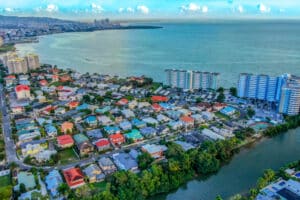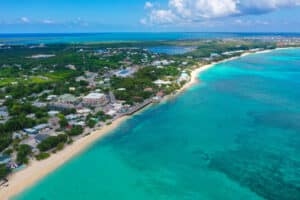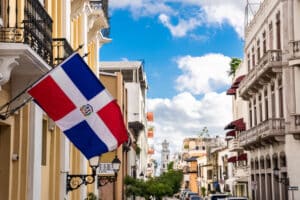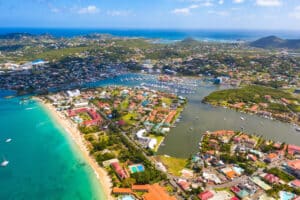Puerto Rico might be the smallest island in the Greater Antilles, but trust us, it’s a gem waiting to be explored.
We are talking 300 beaches along 272 miles of coastline, a UNESCO World Heritage Site, world-class rum distilleries, enchanting bioluminescent bays, numerous lighthouses, forests, nature reserves, wildlife refuges, and internationally recognized festivals.
Puerto Rico is also part of the United States, so no passport is needed for American travelers. How awesome is that?
And the safety of Puerto Rico is as fantastic as the scenery. Millions visit yearly, and most have a worry-free experience. But, you know, nowhere is 100% risk-free.
That’s why we’re here to share some of the island’s social and safety tips. Master those, and your Puerto Rican adventure will be nothing short of amazing.
Are you planning a last minute trip to Puerto Rico? We’ve put together all the resources you’ll need for a fun & safe travel:
🛌 Best & Safest Places to Stay in Puerto Rico:
👉 West Coast Inn’s – Tea/coffee maker in all rooms, Free WiFi, Restaurant
👉 Royal Isabela – 2 swimming pools, Room service, Restaurant
👉 Live Boutique Hotel – Outdoor swimming pool, Non-smoking rooms, Bar
👉 Residences at Dorado Beach – Spa and wellness centre, Room service, Bar
⛱️ Fun Activities & Tours in Puerto Rico:
👉 San Juan Guided Snorkel Tour
👉 El Yunque Natural Waterslide and Rainforest Hike with Transport
👉 Guided LED Night Kayak Excursion in Condado Lagoon, Puerto Rico
🚗 Best & Safest Puerto Rico Transportation Services:
👉 Airport Pickup Service – Welcome Pickups
👉 Rent a Car – DiscoverCars
🙏 Stay Safe While Travelling:
👉 Safetywing (for medical insurance)
👉 VisitorsCoverage (for trip insurance)
Is Puerto Rico Safe?
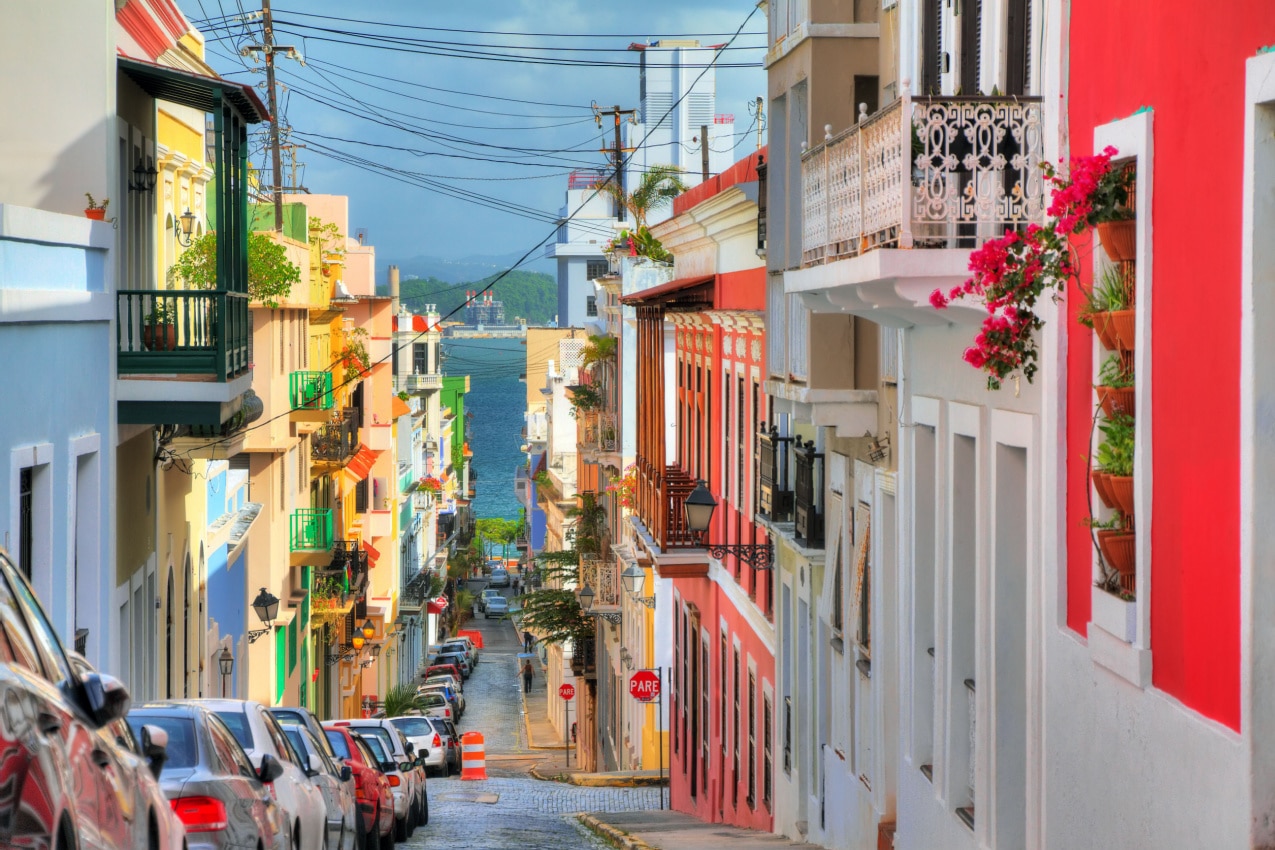
Puerto Rico is known for being very safe. The serious crimes are tied to local gang disputes, rarely impacting tourists.
Your primary concern in Puerto Rico should lean more toward the weather. Earthquakes and hurricanes are not uncommon, so it’s good to stay informed!
We’ll delve into each aspect separately, but for now, here’s an early heads-up on the safety scene in Puerto Rico:
- International travel advisories: Level One, practice normal precautions
- Crime rating: Moderate, 61.72
- Most common crime: Vandalism
- Public transportation safety: Buses and trains are well-maintained and safe, but may be less frequent during nighttime
- Safety walking alone during the day: Moderate
- Safety walking alone during the night: Low
- Road safety: Drive with caution on State Road PR-2, mountain areas of Utuado and Jayuya, Highway 143 in Barranquitas, Ruta Panorámica Luis Muñoz Marin, and interior roads in Toa Alta
- Beach safety: The Atlantic coast in the north has larger waves, while the Caribbean coast to the south has smaller waves
- Common natural disasters: Earthquakes, landslides, and hurricanes
- Carbon monoxide poisoning: Possible, bring a portable CO detector
- Police presence: A team of 11,532 members organized into 13 regions across the island
- Medical care quality: High-quality medical facilities and skilled healthcare professionals
Travel Advisory for Puerto Rico
Puerto Rico sits comfortably under a ‘Level One’ travel advisory, signaling a call for normal precautions – Canada, the United Kingdom, New Zealand, and Australia all give the green light.
For crime concerns, international travel advisories want you to be vigilant against pickpocketing and purse snatching. Keep a close eye on your belongings, including passports and travel documents.
While Puerto Rico isn’t a target for terrorist attacks, demonstrations are noted in the advisories. From time to time, these protests may turn violent, so stay clear of areas with ongoing demonstrations for your safety.
Power outages are not uncommon in Puerto Rico. After Hurricane Maria wreaked havoc in 2017, Puerto Rico has had its fair share of disruptions to power and telecommunications services.
If you’re thinking of renting a car, be aware that road conditions vary across the island—be on the lookout for aggressive driving, sparse use of signals, and heavy traffic in bigger areas like San Juan. Some mountain roads may also be narrow, winding, and containing potholes.
A Comprehensive Look at Puerto Rico Crime Statistics
Puerto Rico maintains a moderate crime rating of 61.72. In 2023, the Police of Puerto Rico recorded a total of 69,571 crimes, a slight decrease from the 70,022 cases in 2022.
The most commonly reported crime in Puerto Rico is vandalism (9,572). Noteworthy improvements include a decrease in homicides to 439, less by 116 from 2022 and 171 from 2021.
Breaking it down by police districts, Bayamon (35,249) and San Juan (31, 302) saw the highest number of criminal cases in 2023.
| Safety Concerns | Crime Rate | Status |
| Overall Crime Level | 71.26 | High |
| Increase in Crime (Past 3 Years) | 72.38 | High |
| Home Break-Ins and Thefts | 59.24 | Moderate |
| Mugging and Robbery | 63.21 | High |
| Car Theft | 58.56 | Moderate |
| Theft from Vehicles | 67.88 | High |
| Personal Attacks | 54.84 | Moderate |
| Verbal Insults | 45 | Moderate |
| Racial, Ethnic, Gender, or Religious-Based Attacks | 21.61 | Low |
| Drug Use and Dealing | 74.33 | High |
| Property Crimes (Vandalism and Theft) | 68.14 | High |
| Violent Crimes (Assault and Armed Robbery) | 67.36 | High |
| Corruption and Bribery | 73.14 | High |
| Safety Walking Alone in Daylight | 59.11 | Moderate |
| Safety Walking Alone at Nighttime | 31.07 | Low |
Police Presence in Puerto Rico
The Puerto Rico Police Force is a team of 11,532 officers, strategically organized into 13 regions across the island. The police officers in tourist hotspots are well-versed in dealing with visitors – they’re friendly, bilingual, and knowledgeable of local attractions. In high-crime areas, you’ll find more visible police presence, contributing to a secure environment for both residents and tourists.
Remember, in Puerto Rico, the police have the right to request your identification. Approach them with kindness and respect, and you’re likely to have a positive experience. And of course, being a law-abiding tourist is the key to steering clear of any run-ins with the authorities.
Public Transportation Safety in Puerto Rico
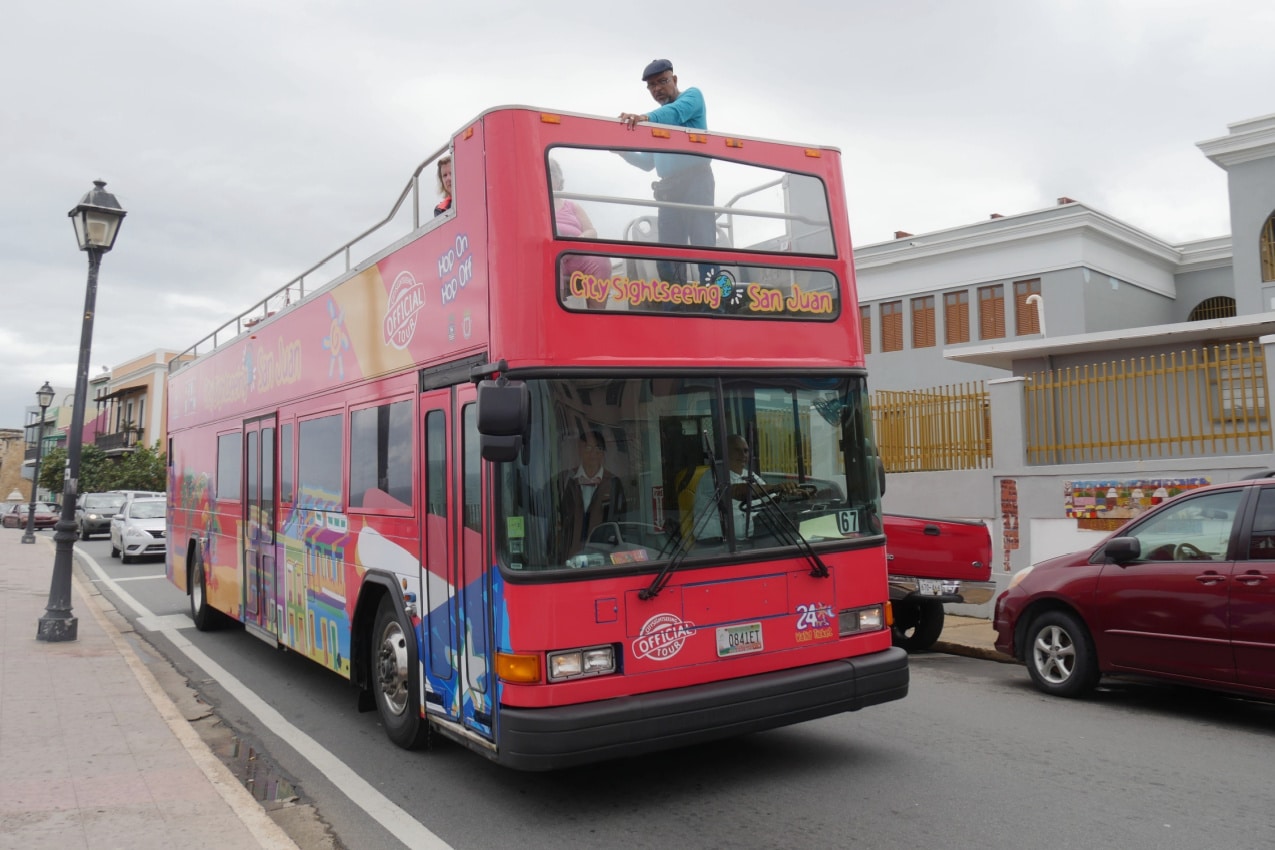
Public transportation in Puerto Rico is generally reliable and safe. There’s an extensive network of 30 bus routes—serving Toa Baja, Cataño, Bayamón, Guaynabo, San Juan, and Carolina, and an Urban Train connecting three municipalities—San Juan, Guaynabo, and Bayamón.
Buses and trains are well-maintained, but it’s important to note that service might be less frequent during nighttime or experience delays during peak hours.
For nighttime excursions, opt for a taxi. Licensed taxis have visible identification, like a rooftop taxi sign or an official taxi sticker. If available, you can also rely on ride-sharing services like Uber. Taxis generally have fixed rates for different zones, with rate sheets displayed inside. If unsure about the fare, clarify with the driver before starting your journey. If the taxi lacks a meter, negotiate and settle on a fare upfront. Always keep communication open, either with a door ajar or through the window, ensuring you can walk away if needed.
Road Safety in Puerto Rico
Driving in Puerto Rico is generally safe, but some locals can be a bit daring on the roads – changing lanes without signaling, speeding, and even running red lights.
Take extra caution on the following roads:
- State Road PR-2: Be cautious of speeding drivers.
- Mountain Areas of Utuado and Jayuya: Damaged drainage can lead to water flow on roads after heavy rains.
- Highway 143 in Barranquitas: Collapsed from hurricane winds and flooding, this road hasn’t been rebuilt.
- Ruta Panorámica Luis Muñoz Marin: Open but has potential hazards like potholes.
- Interior roads in Toa Alta: Large sections of missing tarmac and some entirely collapsed sections.
When parking, choose safe, designated areas, and never leave valuables in your car. Car theft is unfortunately a common issue, so taking precautions is crucial.
Medical Care Quality in Puerto Rico
Puerto Rico’s healthcare system stands out with high-quality medical facilities and skilled healthcare professionals, offering a standard almost comparable to what you’d find in the U.S.
Some of the best hospitals in Puerto Rico include:
- Spanish Hospital Auxilio Mutuo
- VA Caribbean Healthcare System
- Hospital Pavia Santurce
- Ashford Presbyterian Community Hospital
- Hima San Pablo Bayamon
- San Luke’s Memorial Hospital Inc
- Manati Medical Center
- Centro Cardiovascular
- Hospital Damas Inc
- Mayaguez Medical Center
If you opt for public healthcare, be prepared for longer wait lines, even with a scheduled appointment. Private healthcare, on the other hand, offers shorter waiting times but is pricier. If you’re just visiting, your U.S. health insurance should cover your medical costs, but it’s wise to double-check your coverage before booking your trip. Good travel insurance options include TravelSafe, Travelex, Seven Corners, HTH Worldwide, and World Nomads.
Is It Safe to Travel Solo in Puerto Rico?
Puerto Rico can be a safe destination for solo travelers. Urban areas like Old San Juan or Condado, with their high tourist activity, tend to be safer—so sticking to these tourist hotspots is a smart move. On the flip side, quieter and less frequent areas might have increased safety risks after dark, making it wise to avoid such isolated places.
Always trust your instincts and choose reliable transportation. Additionally, don’t overlook the basics—remember sunscreen during the day, moderate alcohol intake at outings, and inform someone when you’re heading out for a hike.
Perils of Nature: The Risk of Natural Disasters in Puerto Rico
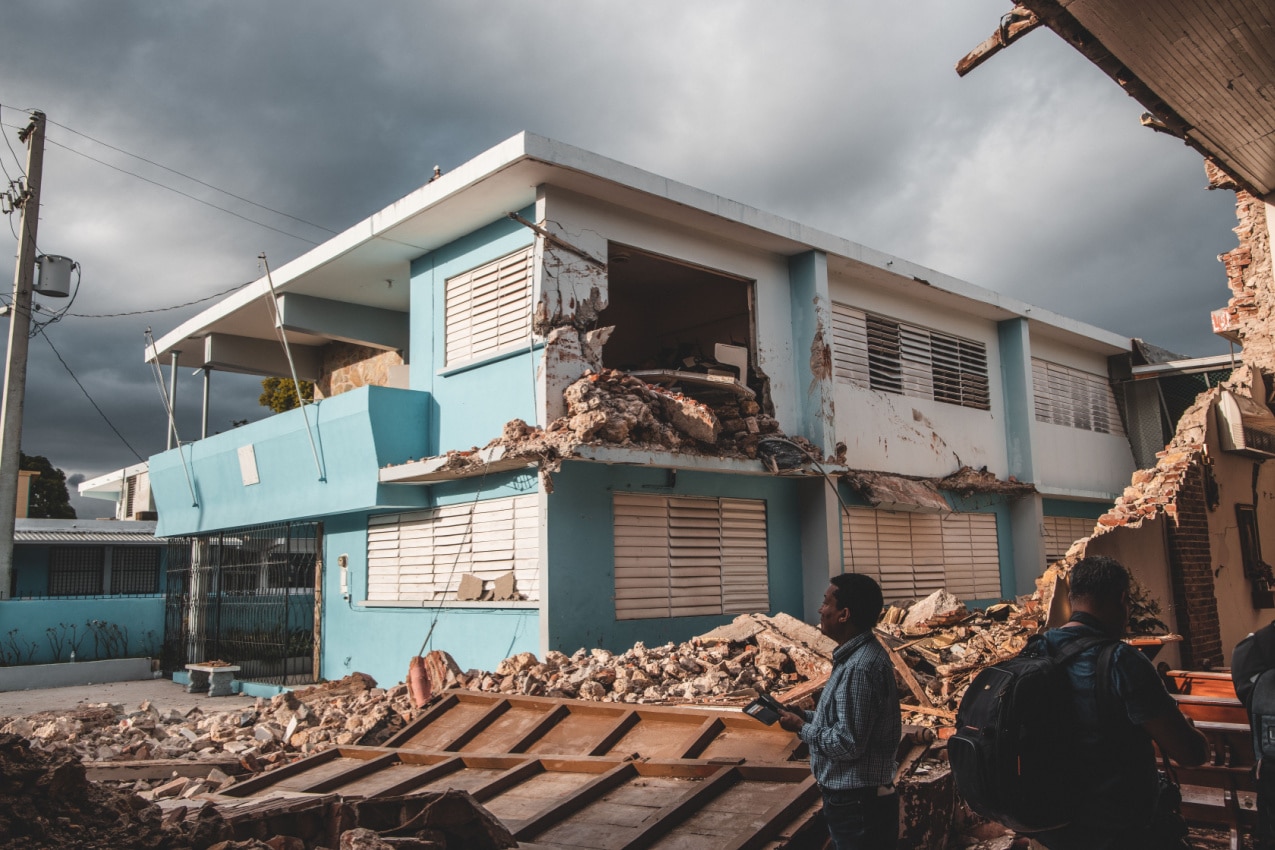
Given its spot in the northeastern Caribbean, Puerto Rico is no stranger to nature’s challenges, from earthquakes and landslides to the big players: hurricanes.
Earthquakes
Puerto Rico is situated near the boundary between the North American and Caribbean tectonic plates, making it susceptible to frequent seismic activity.
For instance, in the winter between 2019 and 2020, the island experienced over 500 earthquakes with a magnitude of 2 or greater on the Richter scale. The most significant one occurred in early January 2020—a 6.4 magnitude quake centered off the southern coast.
In the first ten days of 2024, Puerto Rico had 65 quakes with magnitudes up to 3.6:
- 14 quakes above magnitude 3
- 44 quakes between magnitude 2 and 3
- 7 quakes below magnitude 2, typically not felt by people
A destructive earthquake is rare during a short visit to Puerto Rico, but can still happen. In the event of an earthquake, you may only have seconds to protect yourself, so swift action is crucial.
If you are indoors:
- DROP to the ground
- Take COVER by getting under a sturdy desk or table
- HOLD ON until the shaking stops
If you are outdoors when the shaking begins:
- Find a clear spot AWAY from buildings, trees, streetlights, and power lines
- Drop, Cover, and Hold On
Landslides
The mountainous terrain of Puerto Rico can be vulnerable to landslides, especially during periods of heavy rain or after seismic events.
For instance, the intense rainfall from Hurricane Maria in 2017 triggered over 40,000 landslides in Puerto Rico. The devastating 6.4 earthquake in January 2020 mentioned earlier resulted in more than 300 landslides across the region.
Landslides can occur unexpectedly, so here’s what you can do:
- Research the area you plan to visit in Puerto Rico, including its geological features and past landslide incidents
- Book a hotel located in a safe area, away from steep slopes
- Monitor the weather for any heavy rainfall or severe weather warnings
- When hiking, stick to marked trails
Hurricanes
Puerto Rico is situated in the Atlantic basin and much like its neighboring countries – Mexico, the Dominican Republic, and the Bahamas – it’s highly susceptible to hurricanes.
The hurricane season typically spans from June 1 to November 30, with an average of about 5 hurricanes affecting Puerto Rico each year. Most hurricanes not only come close to the island but also make landfall, especially impacting the east and west regions.
The most significant hurricane to strike Puerto Rico in 2023 was Hurricane Franklin on August 25th. According to the Saffir-Simpson scale, it was classified as a tropical storm hurricane. Out at sea, it reached speeds of up to 149 mph (241 k/h), hitting category-4 status.
Hurricanes don’t strike immediately like landslides or earthquakes. Some hurricanes may make landfall within a few days of formation, while others may change direction before reaching land. This provides ample time for evacuation and appropriate action.
If there’s a hurricane alert, keep away from the beach, and definitely avoid water sports like surfing. The water gets crazy with strong currents and big waves, so safety comes first.
Puerto Rico has shelters, mainly in public schools, ready for hurricanes. In San Juan, the Roberto Clemente Coliseum is the biggest open shelter. It’s smart to know where these shelters are and have an evacuation plan ready.
Beware the Silent Threat: Carbon Monoxide Poisoning in Puerto Rico
When Hurricane Lee showed up in September 2023, the U.S. Consumer Product Safety Commission (CPSC) warned people in Puerto Rico about the dangers of carbon monoxide poisoning.
They pointed out that carbon monoxide can leak from generators, indoor charcoal use, candles, and faulty appliances and recommend having a CO detector—a device that blares an alarm if it senses dangerous CO levels in a room.
Whether a storm’s brewing or not, CO can sneak into your hotel room from a faulty hotel appliance. So before you book your room, ask the hotel staff if they’ve got CO detectors in the rooms. If you’re feeling extra cautious, toss a portable CO detector in your travel bag.
Carbon monoxide is invisible to our senses. However, it gives a heads-up with symptoms like nausea, headaches, and dizziness. Don’t ignore these warning signs. Act promptly because prolonged exposure can leave you unconscious, and in the worst-case scenario, be lethal.
Serenity by the Shore: The Safety of Puerto Rico Beaches
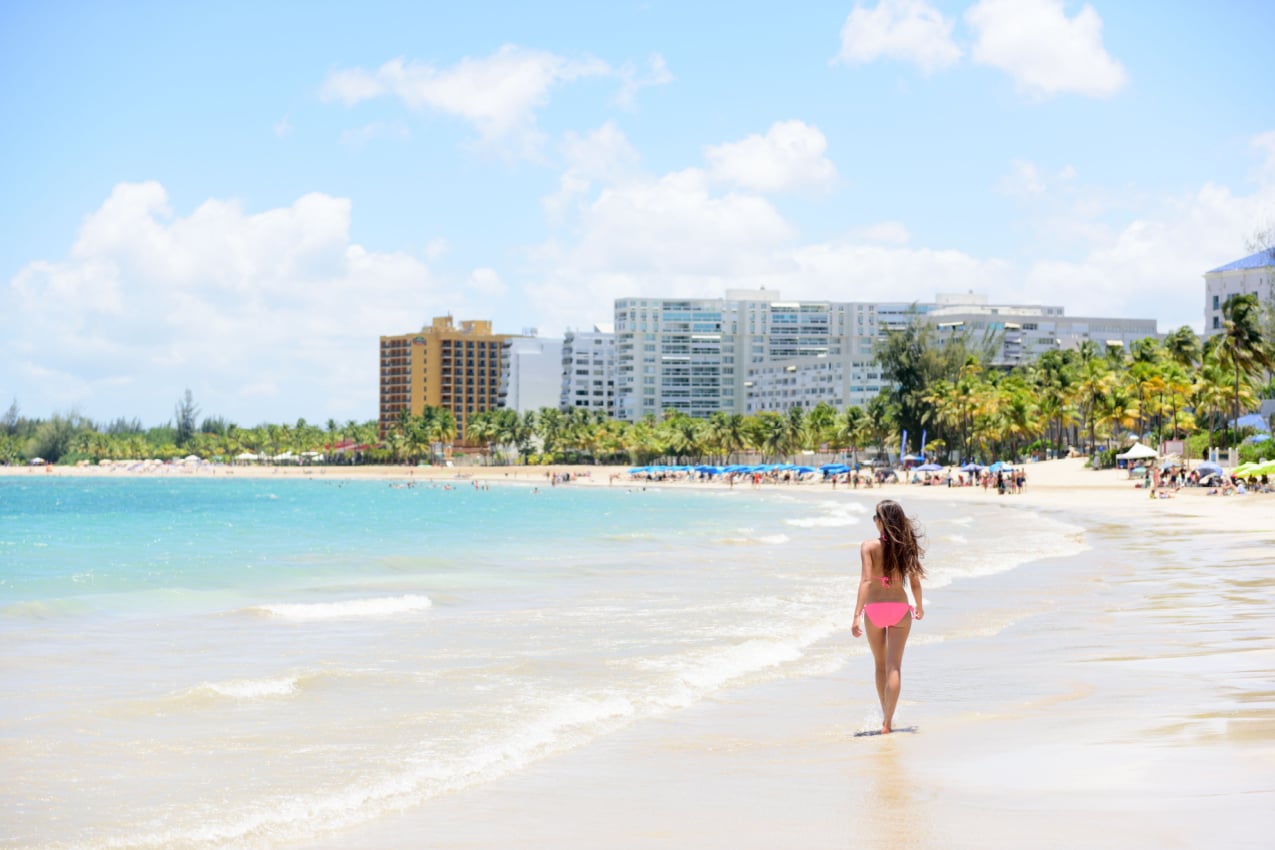
Puerto Rico’s beaches are not just beautiful — they’re plenty. If you like to sunbathe on the Atlantic coast in the north, expect some bugger, more lively waves. On the other hand, the Caribbean coast in the south has milder, more easygoing waves.
Puerto Rico’s more popular beaches are stacked with lifeguards, but not all of them, so it’s up to you to make a judgment of the water conditions.
First things first: check the color of the flag planted on the beach:
- Red Flag: Serious danger—high surf, life-threatening currents, or both.
- Yellow Flag: Rough swimming conditions, exercise caution. Potential high surf or risky currents.
- Green Flag: It’s safe to swim.
- Purple Flag: Spotted dangerous ocean animals (sharks, jellyfish, sea urchins).
- Blue Flag: Eco-label for water quality, environmental care, and safety.
All in all, if you see a deserted beach in Puerto Rico, there’s probably a reason for it. It could be due to the presence of dangerous oceanic animals or strong undercurrents. If caught in a current, follow NOAA’s advice: conserve energy, and swim parallel to the shore until you’re free from the current.
Lastly, beach enjoyment comes with responsibility. Keep an eye on your belongings, avoid flashy items, and be cautious on high-traffic tourist beaches like Ocean Park and Isla Verde, where pickpockets may lurk.
Puerto Rico Weather Patterns: What to Expect
The climate in Puerto Rico is tropical marine—sunny, hot, and humid all year round. Coastal plains hover between 76°F and 88°F, while mountains keep it cool at 73°F to 78°F.
The island receives an average of 62 inches of rainfall annually, with the north coast getting more rain than the south. May to October brings the heaviest rains, overlapping with hurricane season from June to November.
Weather in San Juan
The temperature in San Juan remains consistently warm throughout the year—creating a perpetual summer atmosphere. The temperature spans from 72°F to 89°F (22.2 to 31.6°C), rarely falling below 69°F (20.5°C) or exceeding 91°F (32.7°C).
The sunny and dry season is from mid-November to April—the same time the island is buzzing with tourists. January stands out as the clearest month, boasting an 81% chance of clear skies and minimal rainfall of 1.3 inches (33mm).
Transitioning to the cloudy season, the sky is overcast from April to mid-November. June takes the lead as the cloudiest month, with cloud cover 68% of the time. May to October is the rainy period, with the possibility of a hurricane from June to November. September has the most rainfall, 4.7 inches (119mm), but it typically occurs as quick afternoon showers—refreshing rather than disrupting daily activities.
The windier season spans a brief three months from June to August, featuring average wind speeds surpassing 10.9 mph (17.5 k/h). July marks the peak of windiness, with an average hourly speed of 12.4 mph (19.9 k/h). On the flip side, October emerges as the calmest month, with an average hourly wind speed of 9.4 mph (15.1k/h).
For sunbathing and water activities, warmer water prevails from August to early November, with an average temperature exceeding 83°F (28.3°C). September, with an average water temperature of 84°F (28.8°C), stands out as the warmest month. Even in February, the coolest month for water temperature, it remains pleasant at 79°F (26.1°C), offering a comfortable opportunity for a refreshing dip.
Monthly Average Temperatures in Puerto Rico
| Month | Fahrenheit (°F) | Celsius (°C) |
| January | 77 | 25 |
| February | 77 | 25 |
| March | 78 | 25.5 |
| April | 79 | 26.1 |
| May | 81 | 27.2 |
| June | 82 | 27.7 |
| July | 82 | 27.7 |
| August | 83 | 28.3 |
| September | 82 | 27.7 |
| October | 82 | 27.7 |
| November | 80 | 26.6 |
| December | 78 | 25.5 |
When Is the Best Time to Visit Puerto Rico?
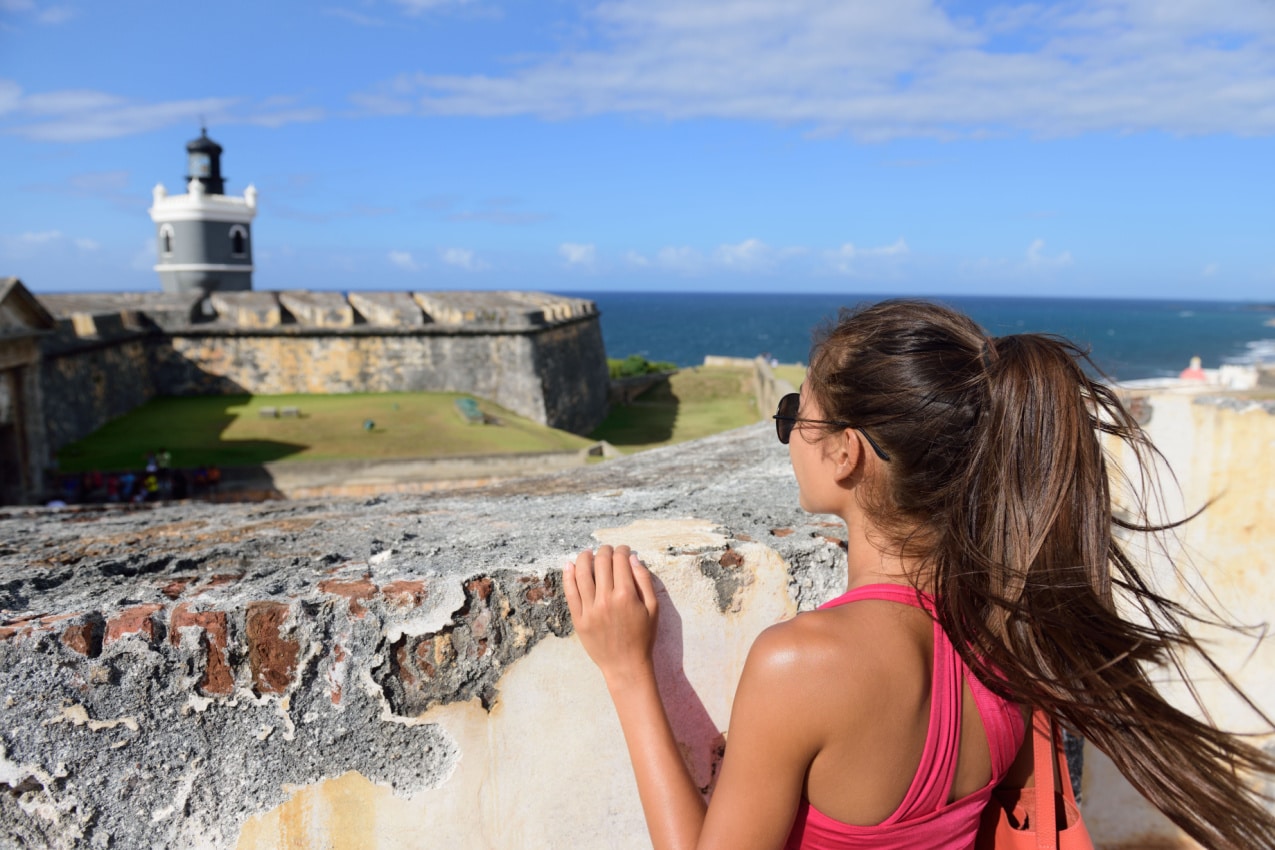
The best time to visit Puerto Rico is from December to April when the island enjoys nothing but sunny skies, minimal rain, and no storms.
December offers fantastic waves for surfing, while January boasts the clearest skies and rain-free days. The winter in Puerto Rico is nothing like the winter in other colder regions in the world, which is why many people opt for this destination to dodge the freezing temperatures back home.
If you opt for a quieter experience but still favorable weather, consider mid-April to May, Puerto Rico’s shoulder season. This period offers a more tranquil atmosphere compared to the bustling peak tourist season from winter to mid-spring.
Summer and fall may bring afternoon showers and the potential for hurricanes, but they also bring rock-bottom prices on flights, hotels, and activities. Yes, there may be occasional afternoon showers, but there are plenty of sunny days in Puerto Rico during these months—so sunbathing and other outdoor adventures are still given. Just be prepared with an umbrella and water-resistant shoes in case of unexpected rainstorms.
How to Stay Safe in Puerto Rico
So, Puerto Rico’s got some caveats that you should prepare for:
- Thirsty? Stick to bottled water. The tap water might be safe and up to standards, but it may give you diarrhea if you have a sensitive stomach.
- Watch out for sandflies and mosquitoes. Put on some insect repellent, and you’re good to go.
- Keep your guard up at night. Muggings can happen, especially in isolated areas. Avoid walking at night around San Juan’s Old City, especially off Norzagaray Boulevard.
- If you’re hitting the road, do it during daylight hours. Reckless driving is more common at nighttime, plus, wrong turns at midnight can lead to dangerous neighborhoods.
- Don’t leave valuables unattended on the beach. And if you’re off to a remote beach, stay sharp—the only company might be a not-so-friendly person eyeing your belongings.
- Learn some basic Spanish. Puerto Rico’s got a bilingual vibe – Spanish and English. However, the majority of locals speak Spanish. Blend in and learn some phrases on apps like Babbel and Duolingo.
- Plan your day. Citywiz is your go-to app for Puerto Rico’s best spots, recommending everything from the best restaurants to fun tours, and the latest cultural events.
- Learn how to navigate through the island. Get a map app like Citymapper. It lays out the cities and recommends transport options along with flights.
Emergency Numbers
- Emergency Services: 911
- Police: 787-343-2020
- Ambulance: 787-343-2222
- Fire Department: 787-343-2330
Wrapping It Up!
Puerto Rico is generally safe for tourists, but hey—stay aware and cautious.
Pickpockets and robbers are after the small treasures: cash, flashy jewelry, phones, and cameras. So keep a watchful eye, especially on public transport, bus stations, public beaches, restaurants, and venues.
Hurricanes might swing by, but with good planning and hitting the sweet spot weather-wise, you’ll soak up nothing but sunshine. Oh, and when you’re capturing those picture-perfect moments, keep your surroundings in mind—respect people’s privacy so you can avoid any unintentional conflict.
